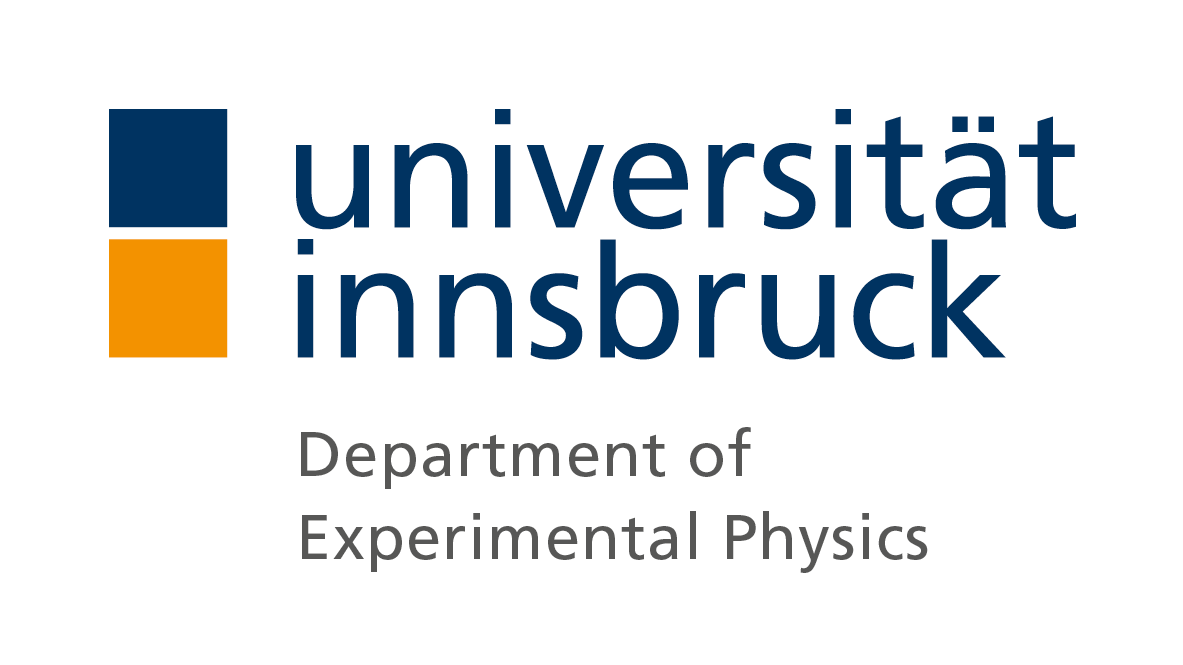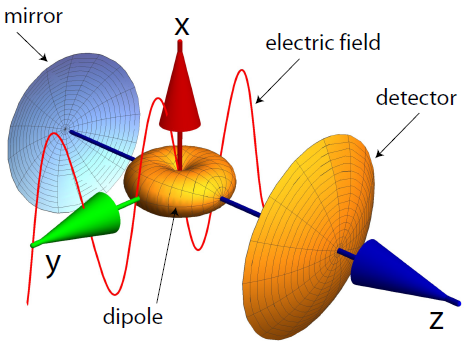Position measurement of dipolar scatterers via self-homodyne detection
The study of levitated dipolar scatterers is a growing field in physics that promises to uncover the connection between quantum mechanics and gravity, to access the QED forces exert on atoms by external boundary conditions and to deliver future devices for ultra-precise force sensing. In collaboration with the nanosphere team of the QI group, we investigated how the measure the position of these scatterers by controlling their spontaneous emission (SE) with a spherical mirror [1]. Developing on the experience of atomic experiments [2, 3], we predict that our method, unlike other state-of-the-art techniques, can reach the Heisenberg limit of detection, i.e. when the position measurement is only bounded by the recoil force of the scattered light.
The setup splits the solid angle surrounding the scatterer into two regions as depicted in the figure. Half of the solid angle is occupied by a mirror and half by a detector. The mirror produces an image of the dipolar scatterer that interferes with the primary emitted field at the detector. This configuration realizes the self-homodyne of the emitted field by self-interfering each emitted photon. Self-interference allows controlling the SE of the scatterer while obtaining superior mode-matching of the radiation fields for homodyne detection. The radiation exists from the scatterer-mirror system only from one side enabling the measurement with only a single one-sided detector.
The new method is suitable for precision studies of any dipolar scatterer such as atoms and nanoparticles without requiring the existence of a complex electronic structure.
Link to the article


